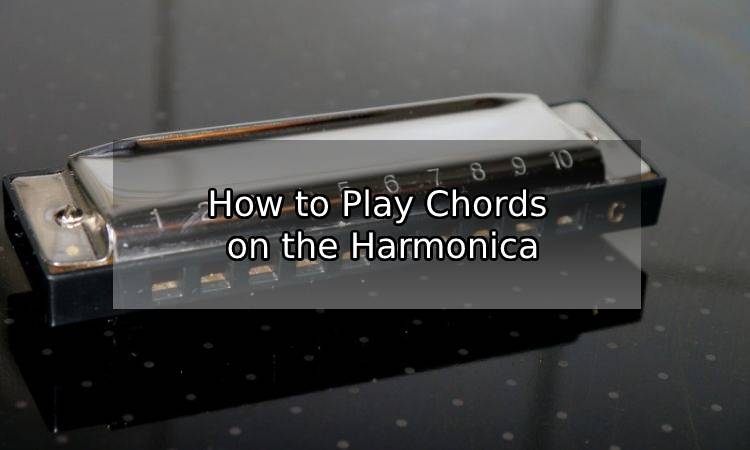Playing chords on the harmonica can open up a world of musical possibilities. Whether you’re a seasoned player or just starting out, understanding how to use chords effectively can add depth and richness to your sound. This essential guide to playing chords on the harmonica will walk you through the basics and help you become more comfortable with this versatile instrument.
The harmonica is often associated with single-note melodies, but incorporating chords can transform your playing style. By the end of this guide, you’ll have a solid grasp of how to play various chords and use them to enhance your musical expression.
Understanding Harmonica Chords
What Are Harmonica Chords?
Harmonica chords are combinations of multiple notes played simultaneously. Unlike single notes, chords can produce a fuller, richer sound. On a diatonic harmonica, which is the most common type, you can play chords by drawing or blowing air through multiple holes at once.
For example, if you play holes 4, 5, and 6 together, you’ll produce a chord that complements the key of the harmonica. Chords can be major, minor, or diminished, each adding its unique flavor to the music.
Helpful Hint:
Start by playing simple chords using the lower holes on your harmonica. As you get comfortable, you can experiment with more complex chords and patterns.
Types of Chords You Can Play
There are several types of chords you can play on the harmonica:
- Major Chords: These chords have a happy, bright sound. They are formed by playing the root note, major third, and perfect fifth together.
- Minor Chords: These chords have a more melancholic or somber tone. They are made up of the root note, minor third, and perfect fifth.
- Diminished Chords: These have a tense, dissonant sound. They consist of the root note, minor third, and diminished fifth.
Helpful Hint:
Practice each type of chord separately to get a feel for their distinct sounds. This will help you recognize and use them effectively in your playing.
How to Play Basic Chords on the Harmonica
Playing Major Chords
To play a major chord, start by locating the root note on your harmonica. For example, on a C harmonica, the root note is C. To play a C major chord, you’ll need to combine the notes C, E, and G. This is typically done by drawing or blowing through the holes that produce these notes simultaneously.
Here’s a step-by-step guide:
- Find the C note, which is usually in hole 4 draw on a C harmonica.
- Play the E note, which can be found in hole 5 draw.
- Finally, add the G note, typically in hole 6 blow.
Practice these steps slowly, making sure each note rings out clearly. As you get more comfortable, you can speed up and experiment with different rhythms.
Playing Minor Chords
Minor chords have a different feel compared to major chords. To play a minor chord, you’ll need to use the root note, minor third, and perfect fifth. For example, to play an A minor chord on a C harmonica, you would combine A, C, and E notes.
Follow these steps:
- Locate the A note, which can be found in hole 4 draw on a C harmonica.
- Add the C note, usually in hole 5 draw.
- Finally, play the E note in hole 6 blow.
Practice transitioning between major and minor chords to get a feel for their different sounds.
Common Harmonica Chords and Their Notations
| Chord | Notation | Key |
|---|---|---|
| C Major | C | Key of C |
| G Major | G | Key of G |
| F Major | F | Key of F |
| D Minor | Dm | Key of D |
| A Minor | Am | Key of A |
Advanced Techniques for Playing Harmonica Chords
Incorporating Chord Progressions
Chord progressions are sequences of chords played in a specific order. They form the harmonic foundation of a song and can add depth and movement to your music. Learning to play chord progressions on the harmonica can elevate your playing from basic to advanced.
For example, a common progression is the I-IV-V-I progression. In the key of C, this would involve playing the C major chord, F major chord, G major chord, and returning to the C major chord. Practicing these progressions will help you understand how chords work together in a musical context.
Popular Progressions to Practice
- Blues Progression: This classic progression includes the I, IV, and V chords. For a C harmonica, this would be C major, F major, and G major.
- Cadence Progression: A common cadence progression is the ii-V-I, which in C would be D minor, G major, and C major.
- Pop Progression: The I-V-vi-IV progression is frequently used in pop music. For C, this would be C major, G major, A minor, and F major.
Helpful Hint:
Start by practicing each chord progression slowly. Once you’re comfortable, try playing along with backing tracks or songs to develop a sense of timing and rhythm.
Using Bending to Enhance Chords
Bending notes on the harmonica can add expressive nuances to your chords. By altering the pitch of a note slightly, you can create a more dynamic and emotional sound. This technique involves changing the shape of your mouth and the airflow to lower the pitch of a note.
To practice bending, start by playing a single note and gradually bend it downwards. Once you’re comfortable with this, try incorporating bends into your chord playing. For example, you might bend the third note of a chord to give it a bluesier feel.
Tips for Effective Bending
- Use Your Diaphragm: Bending is easier when you use your diaphragm to control the airflow.
- Practice Slowly: Take your time to get used to the feel and sound of bending before incorporating it into your chords.
- Listen Carefully: Pay attention to how bending changes the chord and adjust your technique accordingly.
Common Mistakes and How to Avoid Them
Avoiding Overly Aggressive Playing
One common mistake when playing chords on the harmonica is being too aggressive with your playing. This can result in muddy or unclear chords. Instead, focus on playing with a relaxed and controlled airflow. This will help ensure that each note within the chord is clear and distinct.
Practice playing softly and gradually increase your volume as you become more comfortable. This will help you maintain control and produce a cleaner sound.
Ensuring Proper Hand Positioning
Proper hand positioning is crucial for achieving the best sound on the harmonica. Your hands should be cupped around the harmonica to create a resonant sound chamber. Avoid placing your hands too close to the holes, as this can muffle the notes and chords.
Experiment with different hand shapes and positions to find what works best for you. Make sure to keep your hands relaxed and avoid unnecessary tension.
Practical Exercises to Improve Chord Playing
Chord Exercise 1: Simple Chord Transitions
Practice transitioning between basic chords smoothly. Start with two chords, such as C major and G major. Play each chord slowly, focusing on clean transitions and accurate note production. Gradually add more chords as you become more comfortable.
Chord Exercise 2: Adding Rhythm to Chords
Once you’re comfortable with basic chords, try incorporating rhythm into your playing. Strum or play chords in a rhythmic pattern to develop your timing and groove. This exercise will help you integrate chords into more complex musical contexts.
Helpful Hint:
Record yourself while practicing these exercises. Listening to the playback can help you identify areas for improvement and track your progress.
Incorporating Chords into Songs
Choosing the Right Chords for Your Song
When incorporating chords into your songs, choose chords that complement the melody and overall mood of the piece. Experiment with different combinations and progressions to find what works best for your music.
Listen to songs that you enjoy and analyze their chord progressions. This can provide inspiration and ideas for your own compositions.
Practicing with a Band or Backing Track
Playing along with a band or backing track can help you practice using chords in a musical context. It’s a great way to develop your timing and ability to play harmoniously with others. Look for backing tracks in various styles to challenge yourself and expand your playing skills.
FAQs
Wrapping Up
Mastering chords on the harmonica is a rewarding endeavor that can significantly enhance your musical abilities. Throughout this guide, we’ve explored the essentials of playing harmonica chords, from basic chords and progressions to advanced techniques and common mistakes. We’ve also covered practical exercises to help you integrate chords into your playing and provided tips for incorporating them into your songs.



